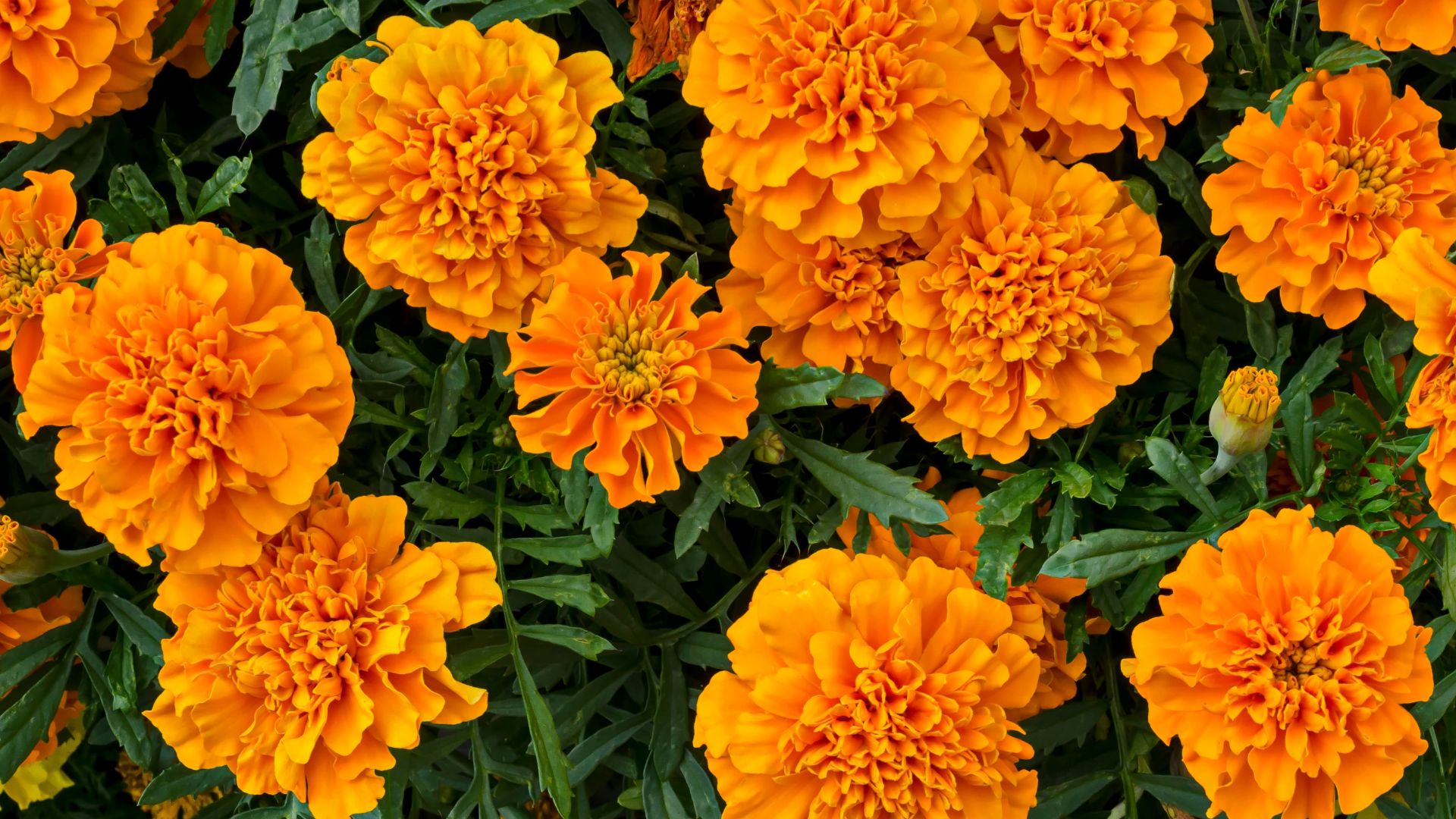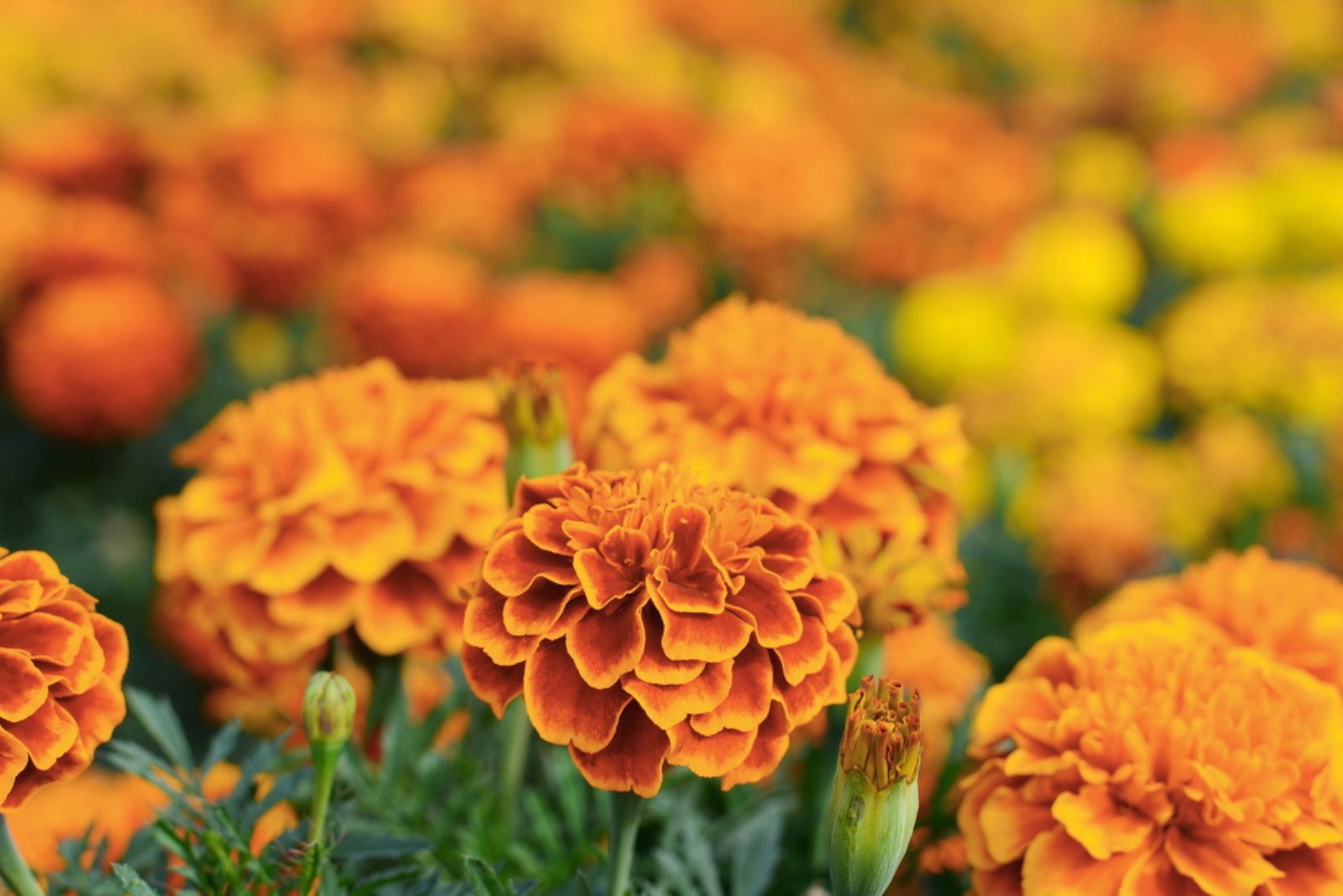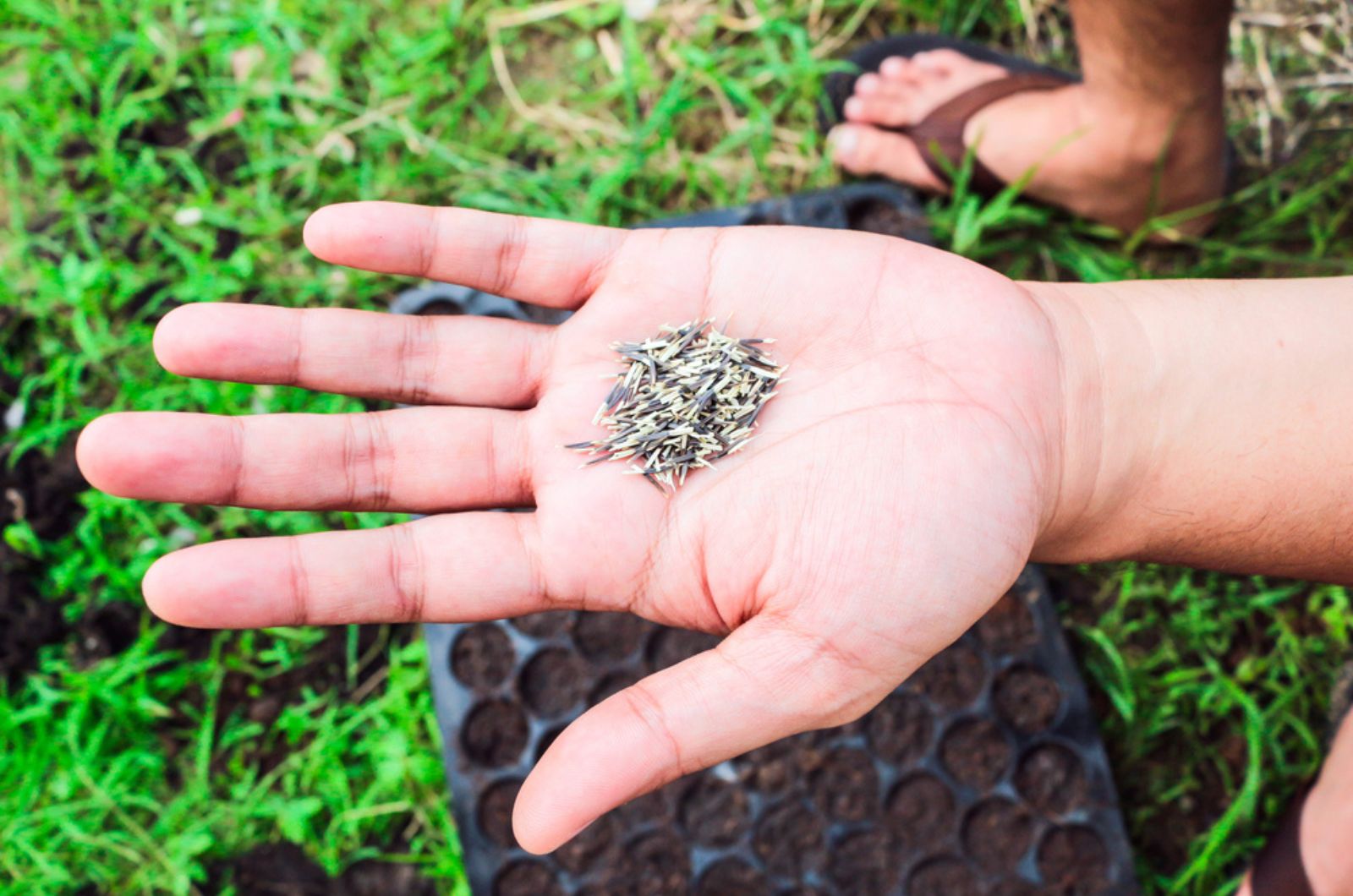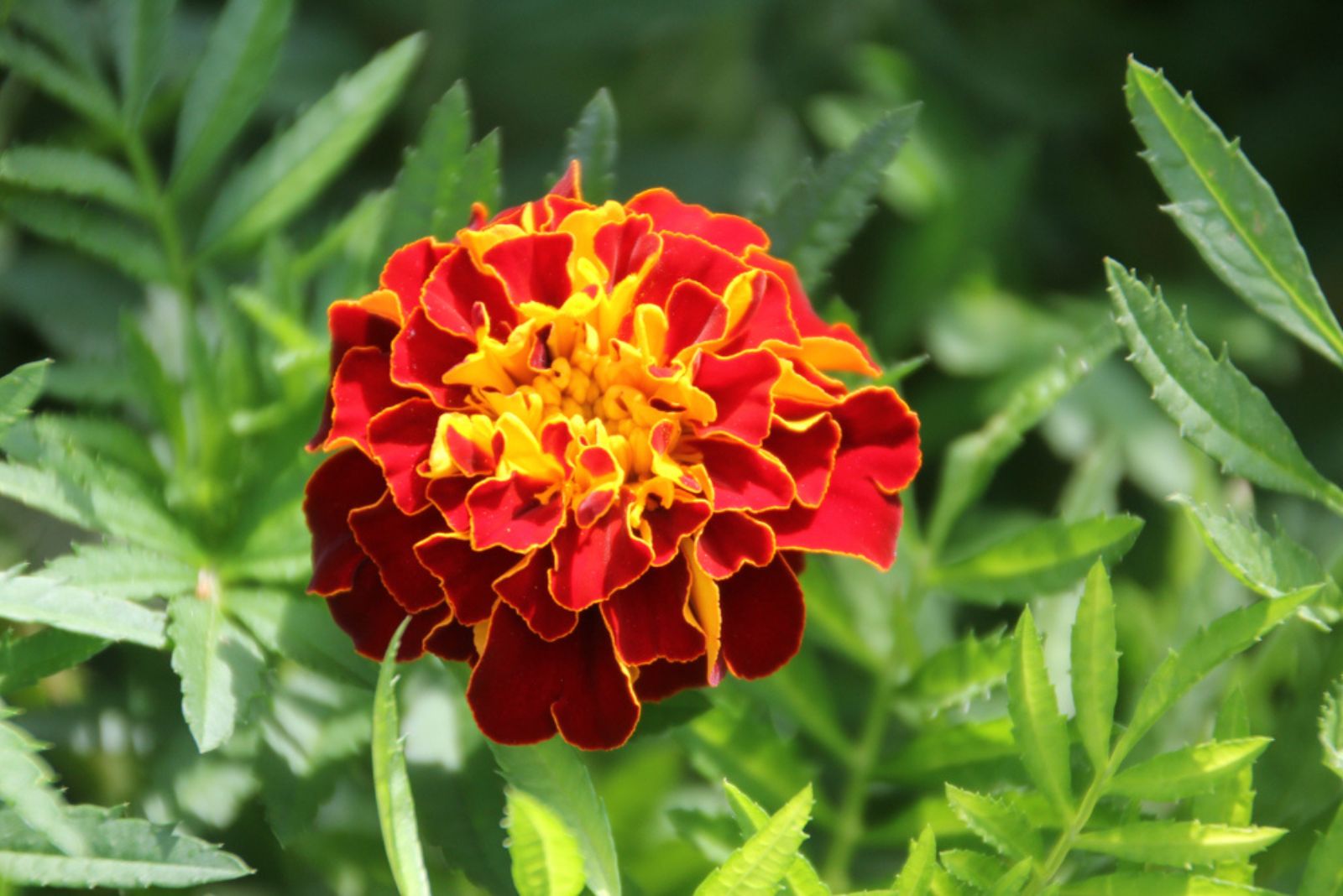There are some pretty confusing things in gardening and one of them is definitely determining if a plant is annual or perennial. Things get even more complicated when growers notice the plant comes back another year but was labeled as an annual.
Marigolds are the perfect examples. You may see them growing in gardens as both annuals and perennials, so what are they?
Well, let’s see the definite answer!
Perennials Or Annuals?
Both! Marigold plants are commonly grown as annuals but some species are perennials and will regrow each season.
These plants belong to the Tagetes genus within the sunflower family, a botanical fact that brings a touch of fascination to these familiar blooms. This genus includes about 49 species but plant breeders keep introducing us to new marigold variations year after year.
Now let’s learn more about annual marigolds.
Annual Marigold Varieties
Growers mainly decide on African or French marigolds, and these species end their life cycle within a year; you plant a seed, it sprouts, develops into seedlings, produces blossoms, and dies off. Therefore, they’re classified as annuals.
Their flowering season starts in spring and may last until the first frost. These marigolds cannot survive cold temperatures in some regions.
But annual marigolds can come back the next season. It’s actually not uncommon for these plants to self-seed; they drop their seeds and germinate as soon as winter ends without your help.
If you want them in your garden next season, stop deadheading them approximately a month before the first expected frost. The flowers will form into seed heads, burst, and drop the seeds on the ground.
If you’re planning on planting your marigolds in a different location, simply collect the seeds from the ground and plant them the next spring in the desired spot.
You should know that hybrid varieties of these plants don’t produce viable seeds and even if the seeds manage to germinate, the plant won’t resemble the one that’s already in your garden. The seeds of hybrid marigold varieties are labeled as F1.
If you want your marigolds to generate viable seeds, you should grow open-pollinated species that are typically labeled as OP on their package.
Perennial Marigold Varieties
If you’re looking for perennial marigolds, you’ll need to look for them online because the seeds aren’t typically available in nurseries. Here are my recommendations.
1. Mountain marigold: this species is classified as a semi-evergreen shrub and it’s hardy in USDA zones 8 through 10. It won’t exceed 3 feet and it produces fragrant leaves and tiny golden blossoms.
2. Mexican mint marigold: this cute perennial is frequently used in the kitchen and tastes heavenly in teas. It can grow from 1 to 3 feet and is suitable for cultivation in USDA zones 8 through 10.
3. Mexican marigold: suitable for USDA zones 8 through 11, this perennial shrub may reach 6 feet and it produces adorable yellow blossoms that attract pollinators.
How To Sow Marigold Seeds
You can sow marigold seeds directly in the ground or start them indoors and transplant them when they’re well established. These are sun-loving plants but if you live in hot climates, you should ensure some shade in the afternoon.
Starting Seeds Indoors
First, check the last frost date in your region and plan to sow marigold seeds approximately a month before.
Here are the steps for sowing the seeds.
1. Add the soil mix to the container and water it thoroughly an hour before sowing your marigolds. This method will help you avoid disturbing the seeds which frequently happens if you water after sowing.
2. The seeds should be sown at a depth of approximately ¼ inch. Then you should add a thin layer of pre-moistened soil and cover the container with plastic wrap. The seeds typically don’t take longer than 6-10 days to germinate at room temperature.
3. Maintain soil moisture but never allow the soil with marigold seeds to become soggy. The seedlings are prone to damping off disease, which leads to severe issues.
Sowing The Seeds In The Ground
Here’s a guide on how to sow marigold seeds directly in the ground.
1. Prepare the planting site by removing weeds and working in a layer of compost.
2. Smooth the planting bed and sow the marigold seeds ¼ inch deep and make sure there’s about an inch of space between each seed. You can thin them later if necessary.
3. Water the soil carefully and put your finger in it to determine if it’s moist enough a few inches below the surface.
If you decide on mass planting, simply scatter the seeds over the larger planting site, use a rake to cover the seeds lightly, and finish by watering the site.
Marigold Care Tips
If you’re a beginner gardener, marigolds are perfect plants for you because they don’t require constant monitoring and they don’t have any special needs.
You can keep them looking neat by deadheading the blossoms and pinching younger plants to encourage bushier growth.
Adding a layer of mulch beneath marigold plants will prevent weed development. These plants don’t need much water and they prefer to stay on the drier side when they’re planted in the ground.
If you keep them in containers, you’ll need to add water each week or even more often if you live in warmer climates.
There are many reasons why marigolds deserve a spot in your veggie garden or flower beds. These plants look amazing, aren’t fussy over growing conditions, repel pests, and attract pollinators! Simply put, they have everything a gardener needs!




